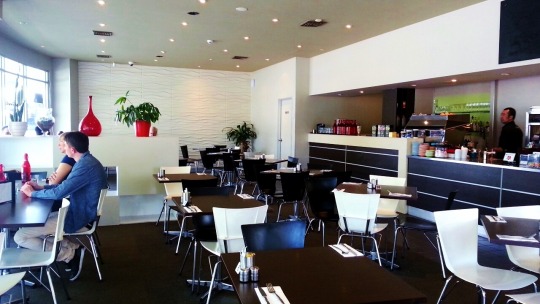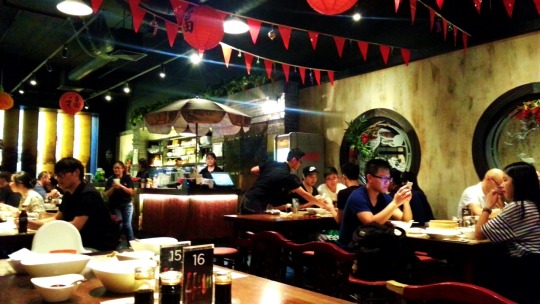Here is an interesting sociological study but one that highlights an important gap in sociological methods and thinking. This article is based on student research in the USA (originally published for a mass, non sociological audience) but it replicates a common problem with research our discipline produces. The ethonographic study uses non-participant observation within a four-star restaurant, which involved the researcher watching both opposite-gender and same-gender pairs eating, and taking field notes of the researcher’s observations. The study finds that “women” change their eating behaviour when eating with “men,” by taking smaller, less frequent bites, in comparison with when they eat with other “women.” This extends to the way in which “women” use napkins. All very interesting and worth reading.
But what the researcher leaves unsaid regards axes of socioeconomics that apparently do not matter to White, middle-class heterosexual audiences. We are not told how many people in the small sample size represent race, class and sexuality dynamics, let alone other markers of Otherness. The author generalises behaviour observed at a four-star restaurant to say something universal about gender, without considering that other cultures control eating (and gender, and race and sexuality) in divergent ways.
That people change their eating habits for different audiences should not surprise a sociologist. That sociologists still presume that White, middle-class Americans represent everyone might be surprising… if minority studies researchers weren’t so used to seeing sociology articles written this way.

If this was ethnographic research on Turkish people, or Indigenous people in Australia, or any other ethnic minority group, it would be a study on race or ethnicity as well as gender. But because many White sociologists see White people as the default – this is pitched as a study solely about gender. Race and other social makers are not mentioned because Whiteness is invisible, even to sociologists.
Beyond the obvious class differences (eating at a four star restaurant may be different than at a fast food chain), heterosexism pervades. In this piece, the author does not speculate on the context of the diners, but by virtue of not making a distinction, the audience is allowed to presume that women dining with men are part of a couple, perhaps on a date (therefore more careful in eating as part of impression management). The audience may muse that women don’t monitor how they eat in front of other women because they are presumably eating with a friend. The presumption of heterosexuality therefore governs how “gender” is discussed.
I used to go to many dinners with one group of girlfriends; two White middle class women born in Australia, and two of us are women of colour of working class backgrounds, born in developing nations. The two White women engaged in the most elaborate ritual after dinner, every time apologising for what they ate by talking about their dress size and weight gain. While their eating behaviour was different when they ate when in the presence of heterosexual men, eating was about verbal self-punishment, even in the absence of men. My dinners with my Other friend, when just the two of us, inevitability led to discussions of not having much money growing up, and how lucky and grateful we were to be able to afford eating out now we’d become adults. In our case, our relationship to food was different because of our migrant experiences; arguably, we bonded by being grateful about food (a different kind of food ritual that may or may not happen amongst our male counterparts).
Of course I have other White middle class heterosexual women friends who don’t engage in this eating self loathing but eating behaviour is nevertheless policed in some way or another. I have other friends who are upper middle class from other countries whose eating habits are very different again; for them excess is a marker of being high status, and of course eating habits vary according to context.
People’s relationship to food, and how we eat it, is influenced not simply by gender, but equally by culture and other social relations.

This researcher is by no means alone. Studies on “gender” are often code for White, middle class, cisgender, heterosexual norms. Using intersectionality, racial minority feminists notice these ommissions all the time; White, middle class researchers less so. If we study “minorities,” the research is seen as a special study on that specific ethnic group. Studies on White people don’t have to account for culture, because White culture is the universal default in the Western European sociological tradition.
It’s almost 2016. Let’s do methods better, sociologists. Time to decolonise sociology.
Image Credits:
1) White Australian man and woman at a restaurant. 2) Asian-Australian men and women at Chinese restaurant. Photos: Zuleyka Zevallos.


i have just completed a gender class, and i was thinking this the whole time!!! THANK YOU!!!
LikeLike
Hi Jennifer,
You’re welcome! Critical race studies is always relevant to all social interactions. Thanks for reading.
LikeLike